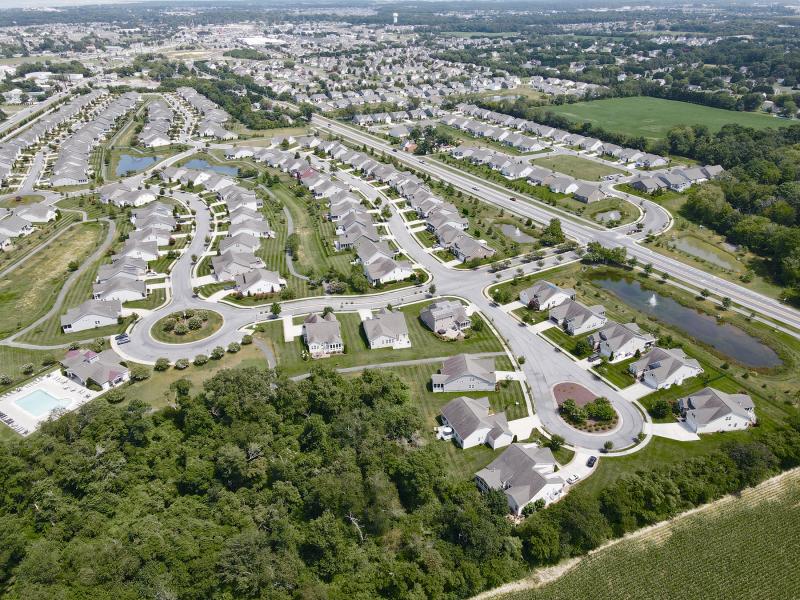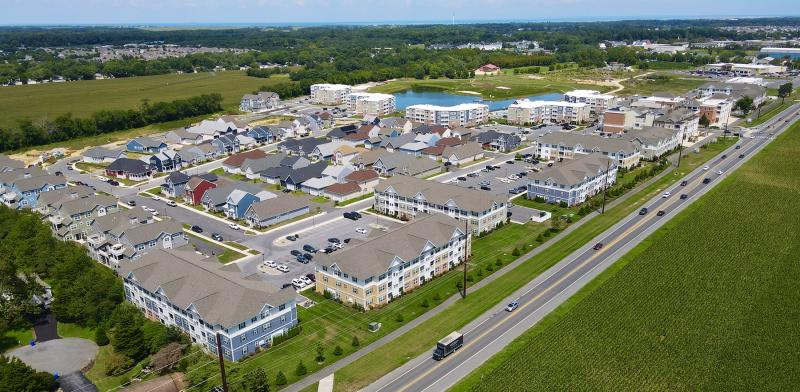Deep dive into facts and figures of a growing population
So, what makes Sussex County – particularly the beach resort area – so appealing for people to move here? It’s become known as a “best place to retire.”
If you talk to retirees who have recently moved to Sussex, they will tell you they like the beach vibe, and it doesn’t hurt that the county has extremely low property taxes and no sales tax.
Many pay per year in in property taxes what they paid a month in their previous hometowns.
The average property owner pays $118 per year in property taxes, but there is much more to the annual tax bill issued by the county.
While 10% of the bill goes to the county, 90% goes to local school districts that set their own tax rates.
So let’s dive deeper and see the taxes on an $800 bill in the Lewes-Rehoboth area.
County taxes – $104 property tax and $12 library tax equals $116.
School taxes – $551 for Cape Henlopen District and $119 for Sussex Technical District equals $670.
The bill I am using also has a street lighting tax of $60.
More about taxes
Sussex County’s tax rate, which will change when reassessment is complete, is 39 cents per $100 of assessed value of a property based on 50% of the 1974 appraised value. Unbelievably, that’s 50 years without a reassessment.
That rate will be adjusted so the county’s increase is not greater than 15%, which is the cap set by law. It’s 10% for school districts.
Still, paying $800 per month is far cheaper than most other surrounding counties in New Jersey, Pennsylvania, Virginia, New York and Washington, D.C., where most of the newcomers come from.
One couple I know from New Jersey said they paid $1,500 per month just in property taxes.
Not main revenue
Property taxes are not the main source of revenue for the county, accounting for about $18 million, or 22% of all revenue. It’s the all-important realty transfer tax that drives the county budget at about $35 million per year, or 35% of revenue.
A 4% tax is levied on the sale of all property – 2.5% goes to the state and 1.25% to the county.
Newcomers do contribute to the county budget in a big way.
So here’s the mind-boggling statistic that is never talked about. Based on the amount collected in unincorporated areas of the county, the total taxable transactions totaled $3.6 billion in fiscal year 2024.
In the state, with all real estate transactions counted, that number was $4.6 billion.
In 2023, the county issued 26,000 building permits. That’s about 104 permits every working day throughout the year.
In fiscal year 2023, the Sussex County Planning & Zoning Commission approved subdivisions with more than 2,500 lots, one of the highest totals in recent years.
Over the past five years, 108 subdivisions with more than 10,000 lots have been approved.
There is absolutely no doubt that real estate fuels the county’s economy.
Seniors are coming
The population in the county is 237,000, according to the 2020 U.S. Census, which is a 20.4% increase since 2010. The population is growing by 2% per year.
That may not seem like a big number until you consider that’s about 4,000 new people each year. And since 2020, more than 32,000 people have moved to Sussex from other states: 5,000 in 2023; 9,000 in 2022; 10,575 in 2021; and 8,300 in 2020.
About 105,000 people in the county are aged 60 to 80 – 29,000 (11%) are 50-59; 51,000 (14.5%) are 60-69; 39,000 (9.8%) are 70-79; and 15,000 (4%) are 80-plus.
Those percentages are higher than the Delaware and U.S. population averages.
About 40% of Sussex County residents are considered senior citizens, and that number is predicted to grow.
Some growing pains
All of this movement does not come without some growing pains. So many people have moved here over the past decade that healthcare, for example, has struggled to keep pace.
Just think of all the healthcare facilities and doctor’s offices that have opened over the past three years, and it’s still not enough.
But the healthcare industry, which is now the No. 1 employer in the county, is working hard to get up to speed to provide services for the growing population. And since many of that population are senior citizens, even more pressure is placed to take care of their healthcare needs.
The hospital systems – Beebe based in Lewes, TidalHealth based in Seaford, and Bayhealth based in Milford – have invested millions in building new facilities, adding staff and expanding to cover underserved areas of the county.
Hiring workers has become a major challenge that doesn’t help the situation.
Even so, getting basic services like specialist appointments and tests can be a challenge. I have lots of evidence in my life to support that statement.
Another of those growing pains is the rising cost of homes in eastern Sussex County. I’ve written dozens of stories about this topic over the past five years.
The bottom line is that many of the workers who serve our food and wait on us at stores can’t afford to purchase a home in eastern Sussex, with prices ranging from $500,000 to well over $1 million.
High rents, and the overwhelming demand for apartments, leave workers with few options other than living in the middle and western parts of the county.
Developers are slow to answer the demand for workforce housing, but some movement is starting to occur.
Once you get away from the beach area, homes do become more affordable, and apartments are being built, particularly in the Georgetown area.
Many retirees moving here have sold their former homes and have a lot of equity to invest in a new house, so the demand remains high.
Newcomers want nice homes with amenities, and local builders are happy to oblige.
The Sussex County of just 10 to 15 years is almost unrecognizable today.




























































